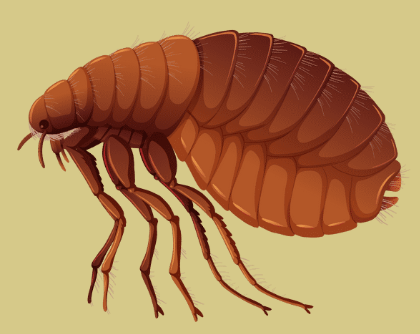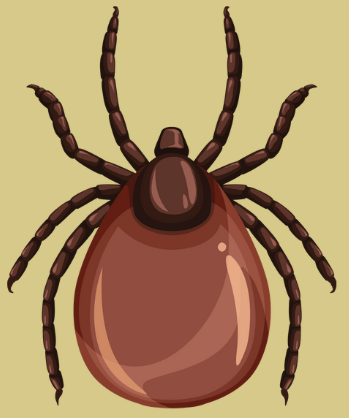Spring is in full bloom! It’s the season of new life, new growth, and fresh flowers abound. When many think of spring, they think of bright colors, Easter, the first warmth after winter, and the buzzing of bees. It’s the season where animals start to raise their youth, including the smallest of small, and, of course, the less-than-pleasant.
It’s no surprise that some arthropod species thrive by means of harming others— everyone knows of them: mosquitoes, lice, fleas, and the like. With the springtime surplus of outdoor activities and the annual rise in temperature, these insects start to become more of a problem.

Siphonaptera is an order of insects encompassing all types of fleas, a common pest for families with outdoor pets, especially dogs. There are about 2,500 species of flea, can you imagine all the bites? Pawlicy.com states that one in every seven dogs is infested with fleas, and what’s worse is that they’re very difficult to eradicate.
Many types of fleas can be found in backyard grasses, which is where your pet may pick them up. These little dark bugs are easy to identify by the way they move: sharp, sporadic movements, and their ability to jump far distances. Once they’re under the protection of your pet’s fur, they’ll begin to feed, biting relentlessly.
Early signs of fleas can include excessive scratching, flea dust, restlessness, and agitation, as well as visible bites that resemble small ruddy bumps on the skin.
Fleas reproduce quickly, too. “One adult female flea can lay up to 50 eggs a day, producing hundreds of fleas over a single month,” claims Frontline.com. An infestation can quickly get out of hand.
“(Our dogs) ended up bringing the fleas inside the house, which in turn, embedded into our couch and got carried throughout the house to our indoor senior cat,” pet owner Terra Brown explains when asked about a recent flea infestation. “We treated (the cat) with Advantage 2, recommended by our vet. We also treated (our dogs) with Nexgard chewable…To try to eradicate the fleas in the house, we initially went through and shampooed the carpet in our bedroom to kill the live fleas and drown larvae.”
With the correct procedures, it’s possible to get rid of fleas. Many sources recommend vacuuming often, especially in places your pet frequents. Bathing your pets is also a great way to kill the fleas on their body, but don’t forget to rid your house of them, too!
Webmd.com claims, “If regular vacuuming isn’t enough, try sprinkling some salt or baking soda on the carpet or furniture first. Salt and baking soda both can hurt fleas by drying them out.”
Another great remedy, especially if you’re unable to bathe your pets, is medicine. (medicine options)

Ticks are another group of parasites that cause many problems year-round. They are known to spread diseases such as Lyme disease, Rocky Mountain Spotted Fever, and other similar illnesses.
An individual who wishes to be referred to as Cas says, “My cats used to have ticks, bringing them into the house and laying on me, thus having them latch onto me and my family instead. That got me sick so we had to give them baths every time they played around in the tall grass.”
Ticks often attack humans and pets but can be removed if done carefully. Cdc.gov writes the following steps for removing a tick from the body:
“Use clean, fine-tipped tweezers to grasp the tick as close to the skin’s surface as possible.
Pull upward with steady, even pressure. Don’t twist or jerk the tick; this can cause the mouth parts to break off and remain in the skin. If this happens, remove the mouth parts with tweezers. If you cannot remove the mouth easily with tweezers, leave it alone and let the skin heal.
After removing the tick, thoroughly clean the bite area and your hands with rubbing alcohol or soap and water.”
“So quite recently I bought a pregnant stray cat into my home,” recalls AJ, an online acquaintance of the author. “She was covered in ticks, at first I thought they were some kind of fleas, but then I realized that they were plump and red. So I looked up how to get ticks off of her without stressing her out…but I ended up having to take her to the vet.”
It is recommended that you thoroughly check your skin after being in tall grass (especially wild grass), and check the skin of your pets anytime you walk them. Veterinarians can provide further information on what actions to take, as well as on the preventative measures for ticks and fleas.





































